Comments (4)

Throughout The Garden of Earthly Desires, Hieronymus Bosch highlights a mysterious depiction of human reality through immense details and nuances. Although the Renaissance is known for its crisp, clean, and reverent religious art and architecture, this painting highlights a shift into indulgent, dark, and mythological imagery, shifting from the standards of the time. This wooden canvas folds, creating an exterior painting and a tri-fold painting on the interior. Adhering to the cultural standards of the day, the exterior painting depicts the sphere of the world in monotone, blue-grey colors. This exterior scene is said to contain a creation story due to the inscription of Psalm 33 and the presence of God in the upper corner. Additionally, the scene is a geometrical anomaly since the flat landscape is held within a sphere, similar to that of a snow globe. When the exterior is opened, revealing the inside, we find a bright, vibrant, almost mythical scene. The far-left panel depicts a familiar Genesis scene with Adam and Eve nude in the landscape, surrounded by animals, and resting next to a clothed figure who probably represents either God or Jesus. The vibrant pinks, blues, and greens create the illusion of fantasy or mythological story. This is aided by the unnatural orientation of the rocks and animals, which appear in fantasy novels but not reality. Throughout the far-right panel, we see a dark depiction of eternal damnation. There appear to be depictions of wars, torture, and death. The colors are deep and dark, highly contrasting with the bright colors of the other side. Once again, there are mythological creatures throughout the frame. There are so many figures giving or receiving actions that it is impossible to describe them in any detail. They fall against a backdrop of fires and explosions as the damnation occurs to every figure in the frame. In the center is the link between the two edges. Once again with many figures and vibrant colors, we see a highly mythical nature in the painting. The animals and structures are those seen in novels and movies. In addition, the amount of fruit throughout the landscape hints at an obsession with sexuality. The actions taken by the figures are said to be sins of lust, leading to the corruption of creation and the deadly sins.
The middle panel highlights no conflict or corruption. In fact, the only depictions involve everyone partaking in their desires, harmony with each other and nature, and no repercussions for any actions. This depiction seems to be the utopian dream that people are searching for--harmony and unity with no punishment. However, the outer panels tell a different story--where we started and where we are going. At the same time, it seems as if Bosch considers the outer panel to be the utopian dream. If you close the chaos of the inner panels, you are left with a quiet and calm scene filled with the presence of the Lord. Since Bosch is such a mystery, it is almost impossible to know exactly what he intended with or for this painting. However, the details and fantastic nature of this work intrigue viewers to study its origins, details, and legacy.

When I first looked at this painting, I immediately recognized that there is a time aspect to it. It looks to me that the far left painting represents the past. The middle painting represents the present. And the far-right painting represents a projected future based on the middle painting. The words I would describe each painting from left to right would be as follows: Peace, Chaos, Destruction. In the left painting, peace is represented by the beginning of time, when God created man and animals. In the center painting, it looks as though everyone is feasting and indulging themselves with either romance. But then destruction comes as a result of the chaos. Hieronymus Bosch seems to be prophetically telling what the future will look like if the world continues on its current path. Or he may have recognized the cycle the world finds its self in, peace, chaos, destruction. You can see this play out through the colors Bosch uses in each painting. From lovely forest green to a dark gloomy black. Even the environment starts on the left with grass and trees and blue water and sky. In the right painting, there is no more grass or trees and sky. I also noticed that in the center painting Bosch created circles in the center of it. Starting with the lake and then to the people riding on animals around the lake. It looks like ripples in the water which would also represent the passing of time.

For some reason, when I look at this painting, Vanilla Ice pops into my head and starts singing 'Bosch, Bosch, baby' (to the tune of 'Ice, Ice, baby')

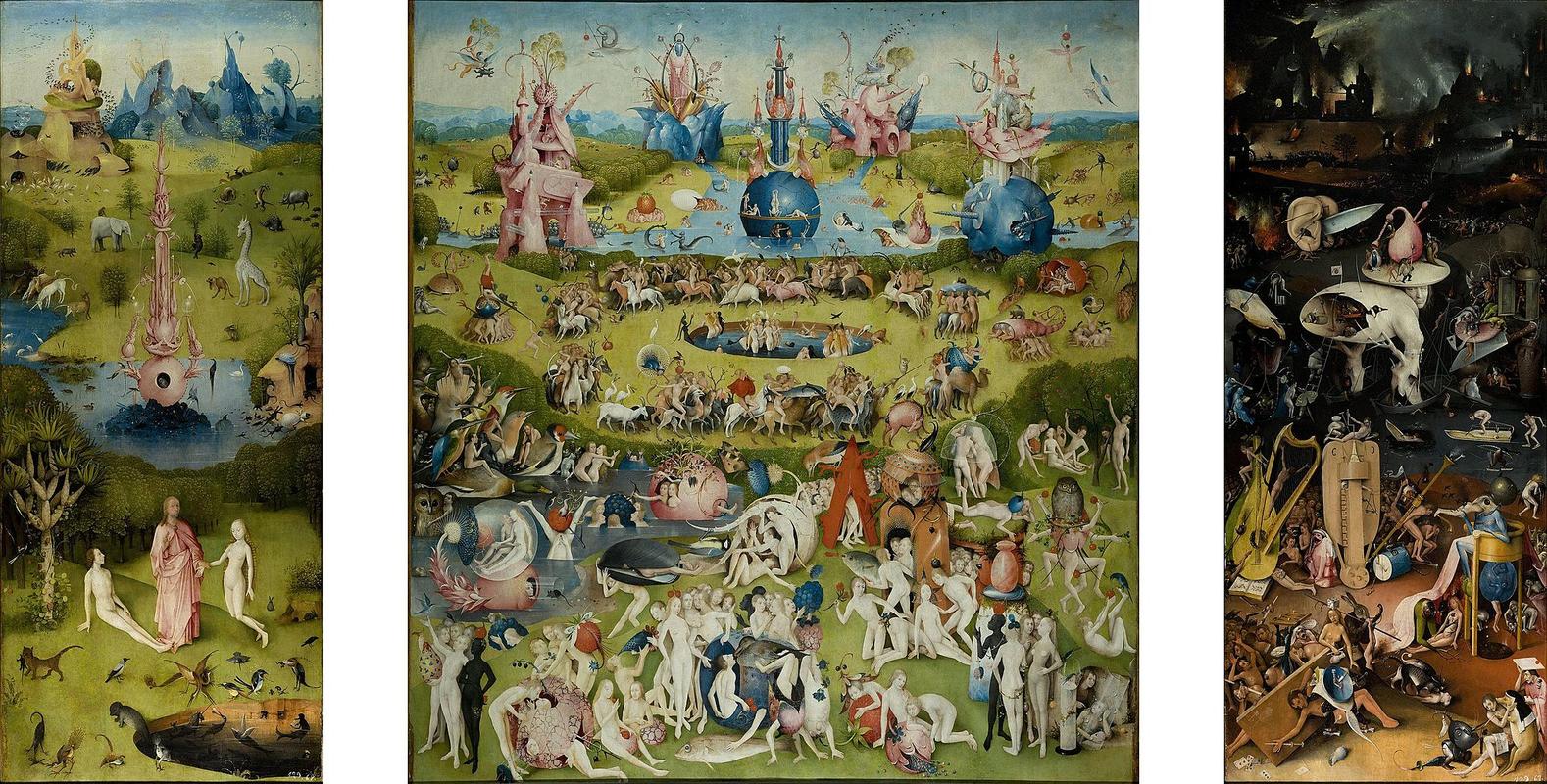
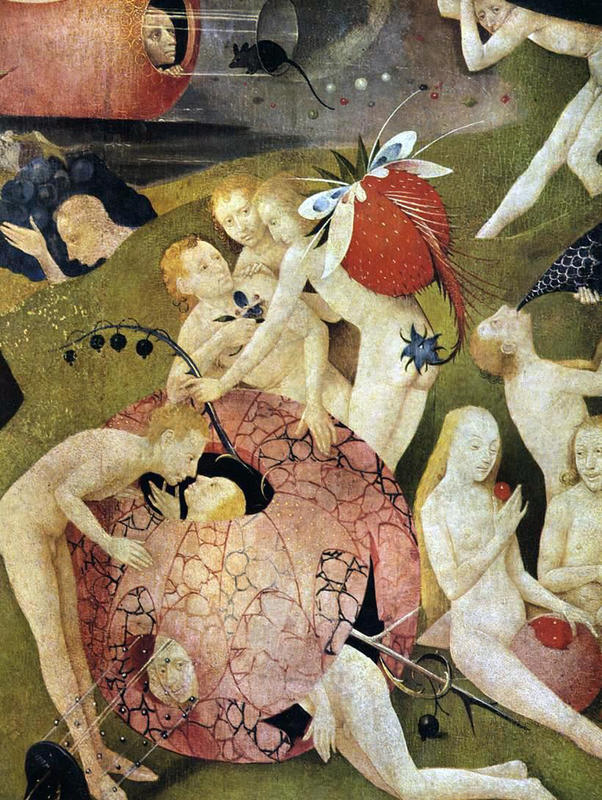
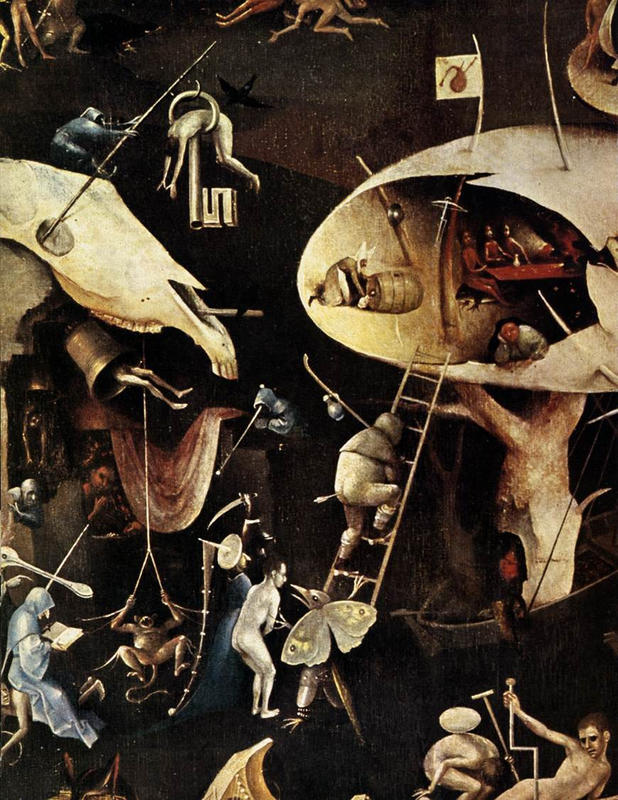
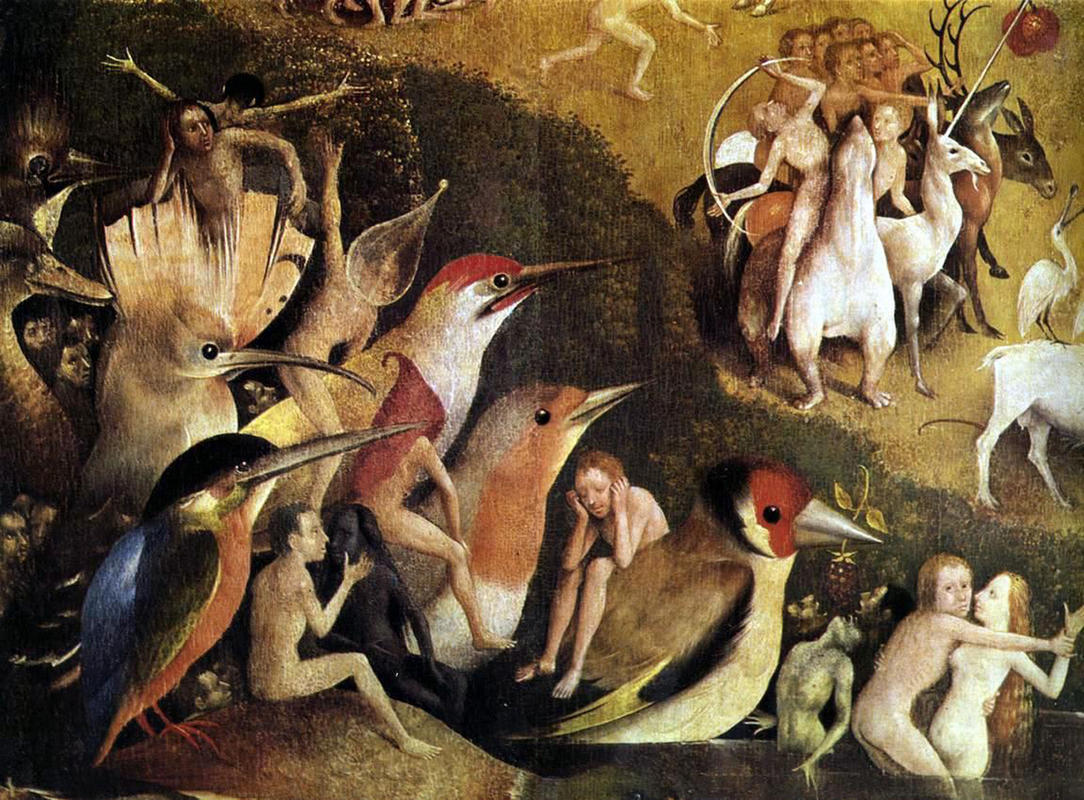
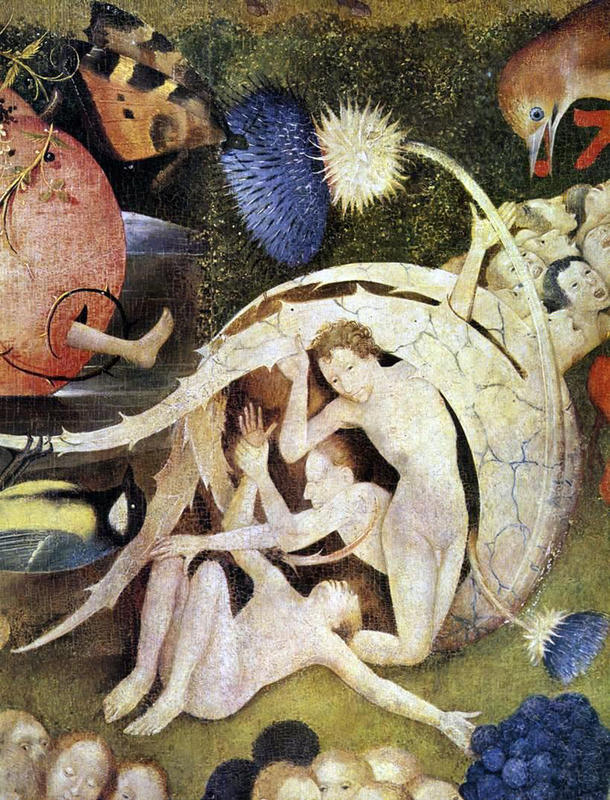
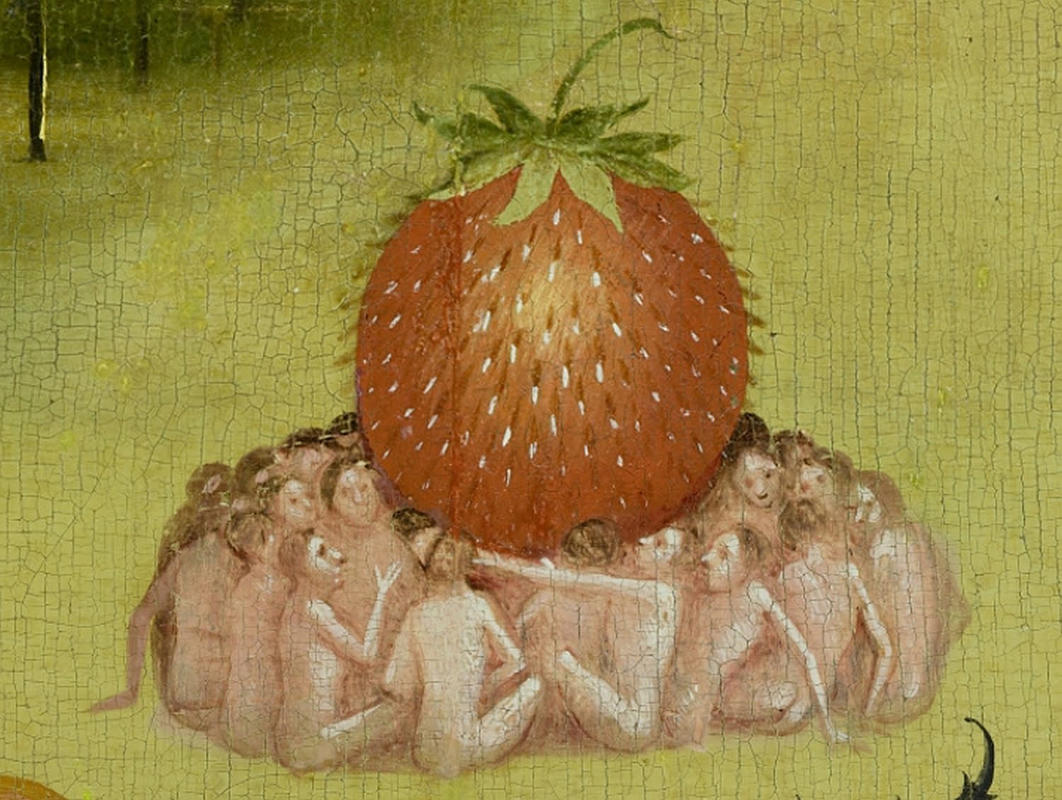
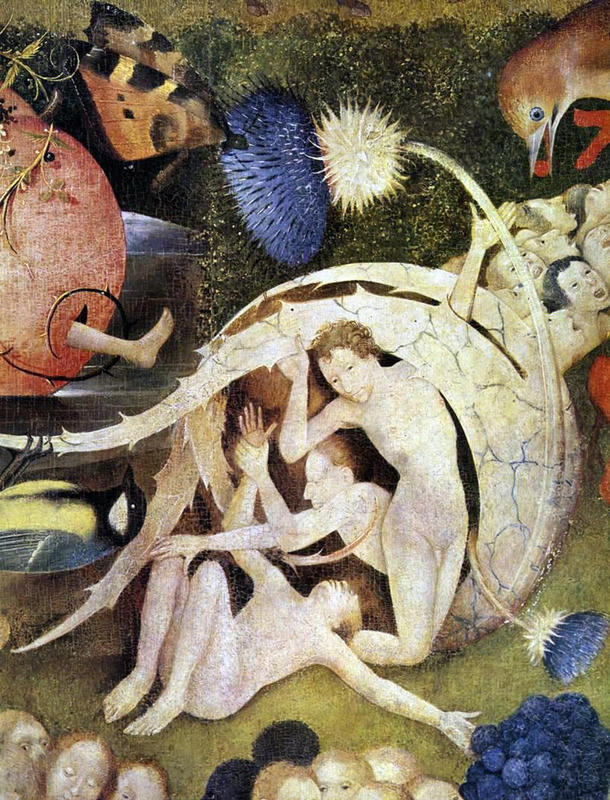
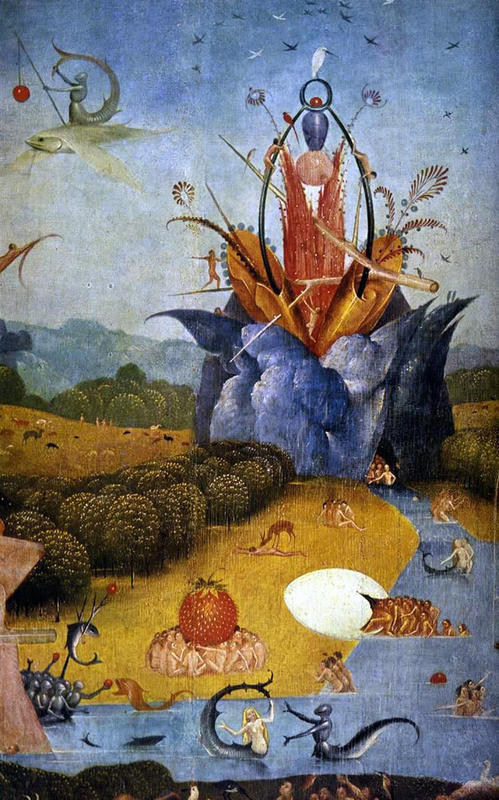
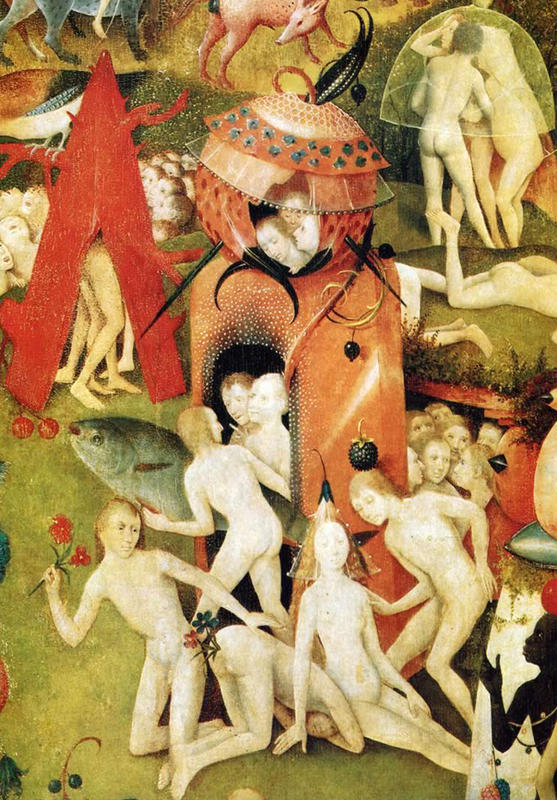
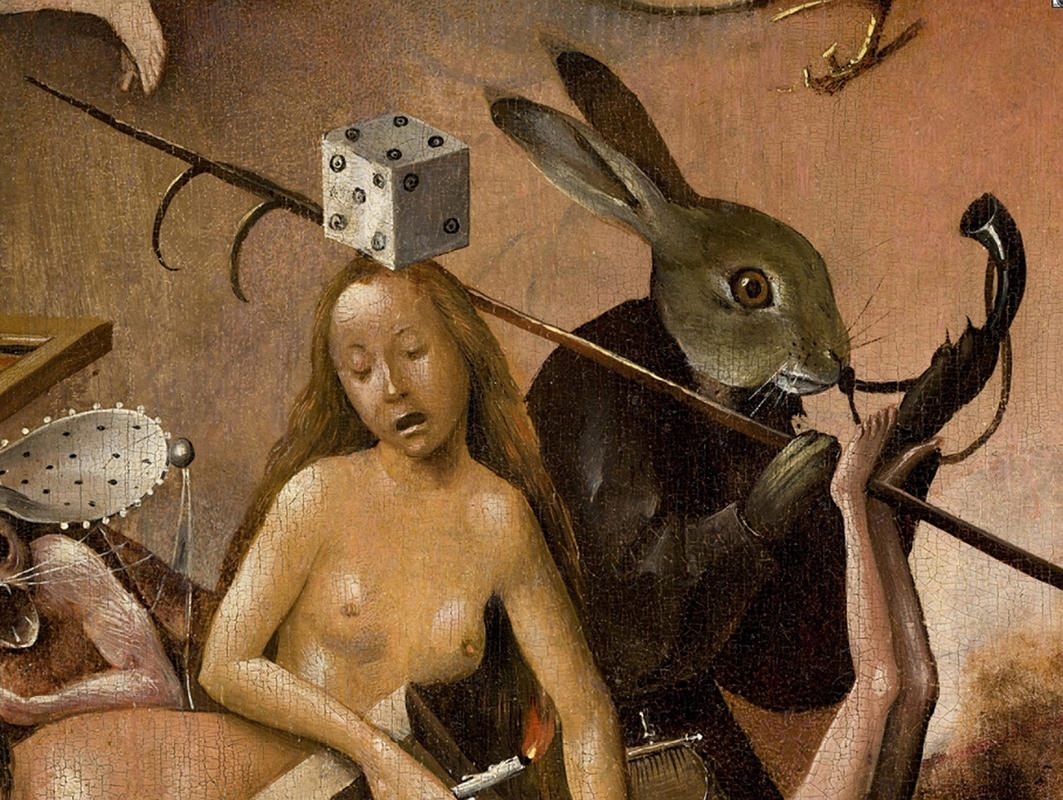
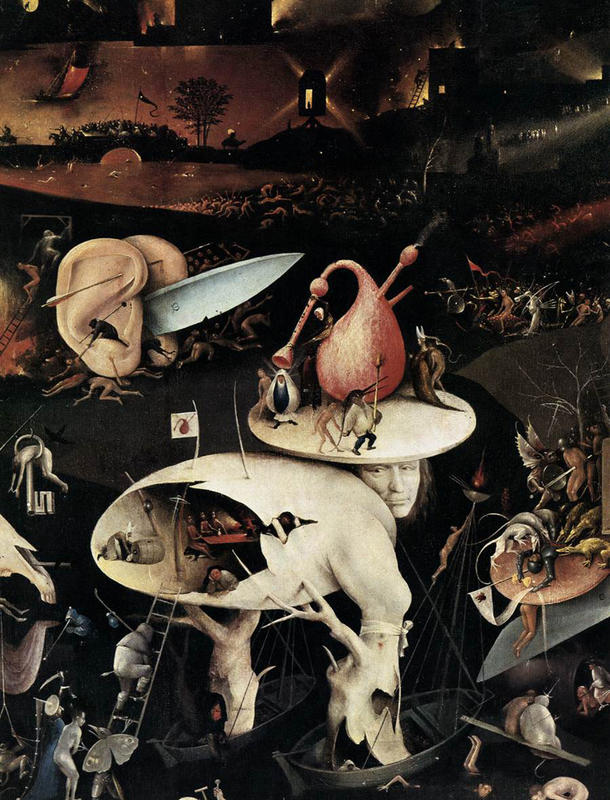
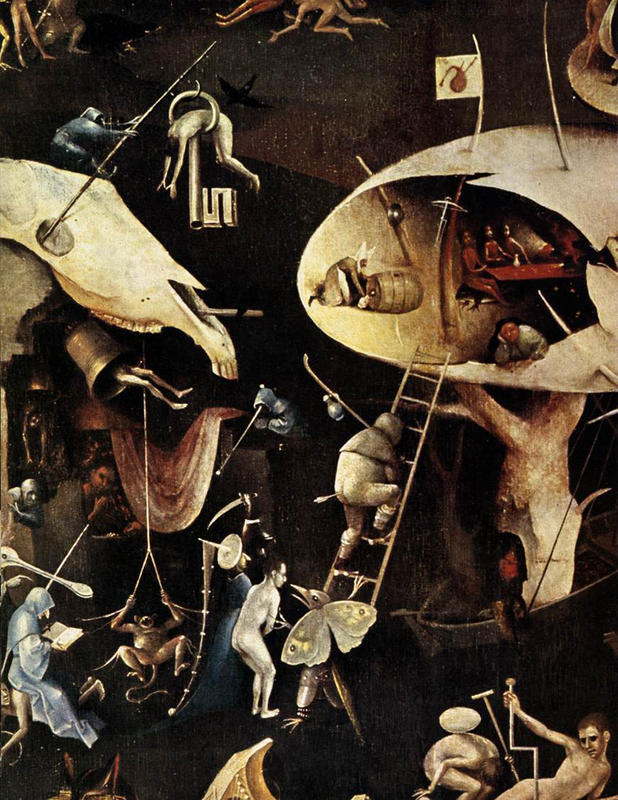
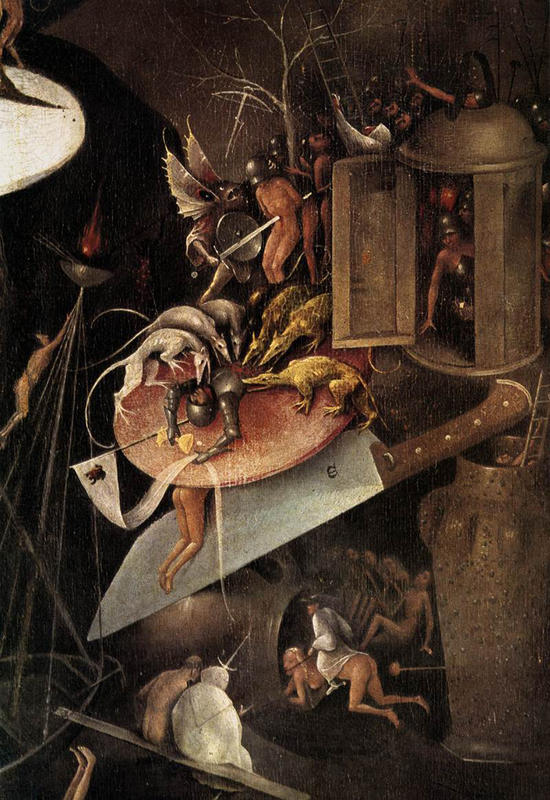
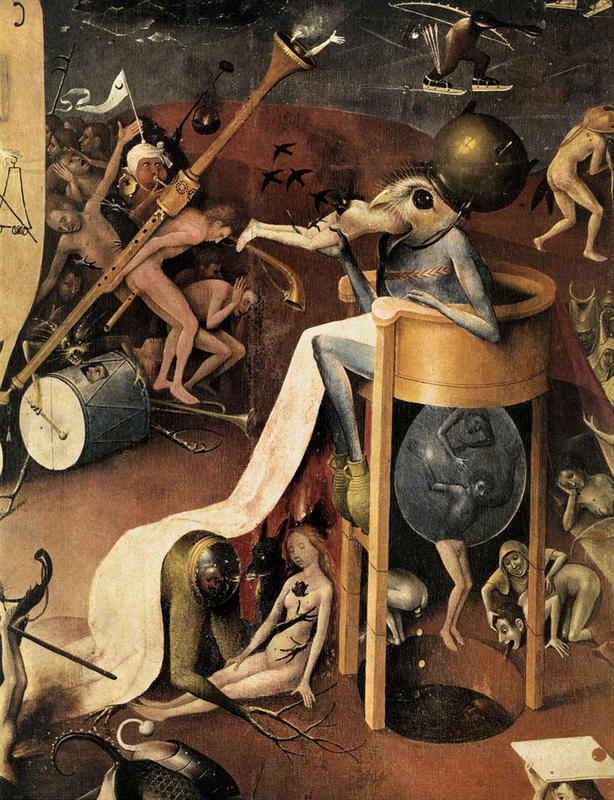
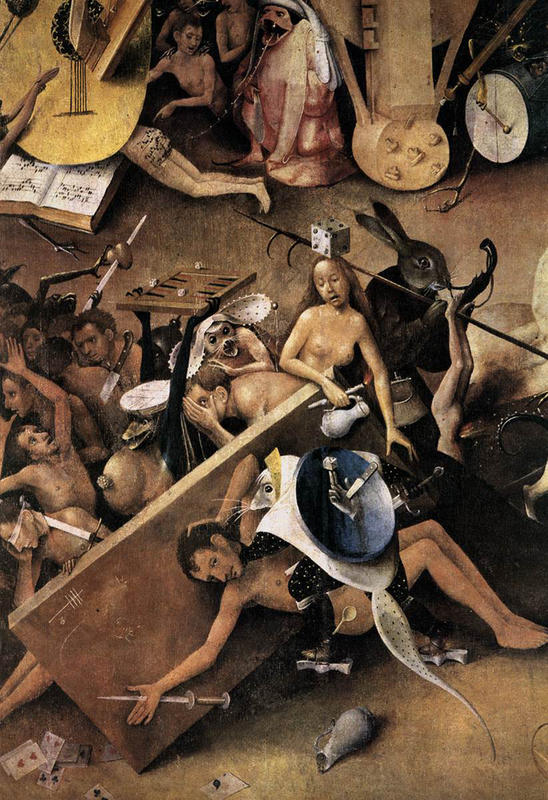
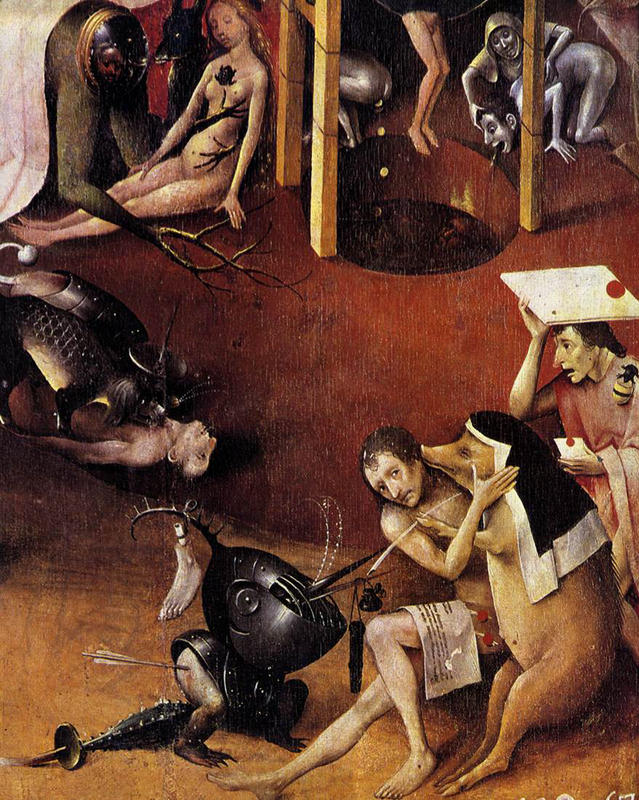
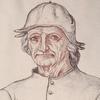
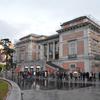
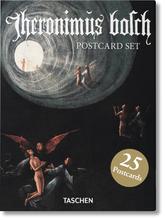
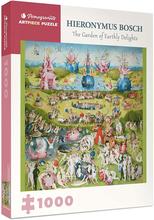
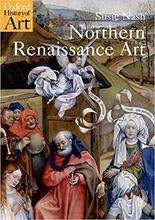
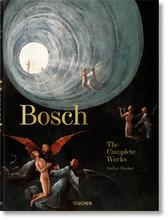
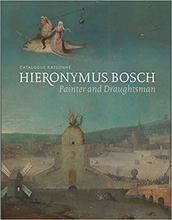
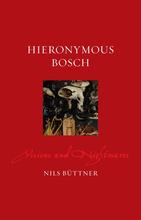













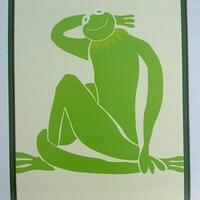



The three paintings depict the history of the world and the process of the creation and continuation of evil.